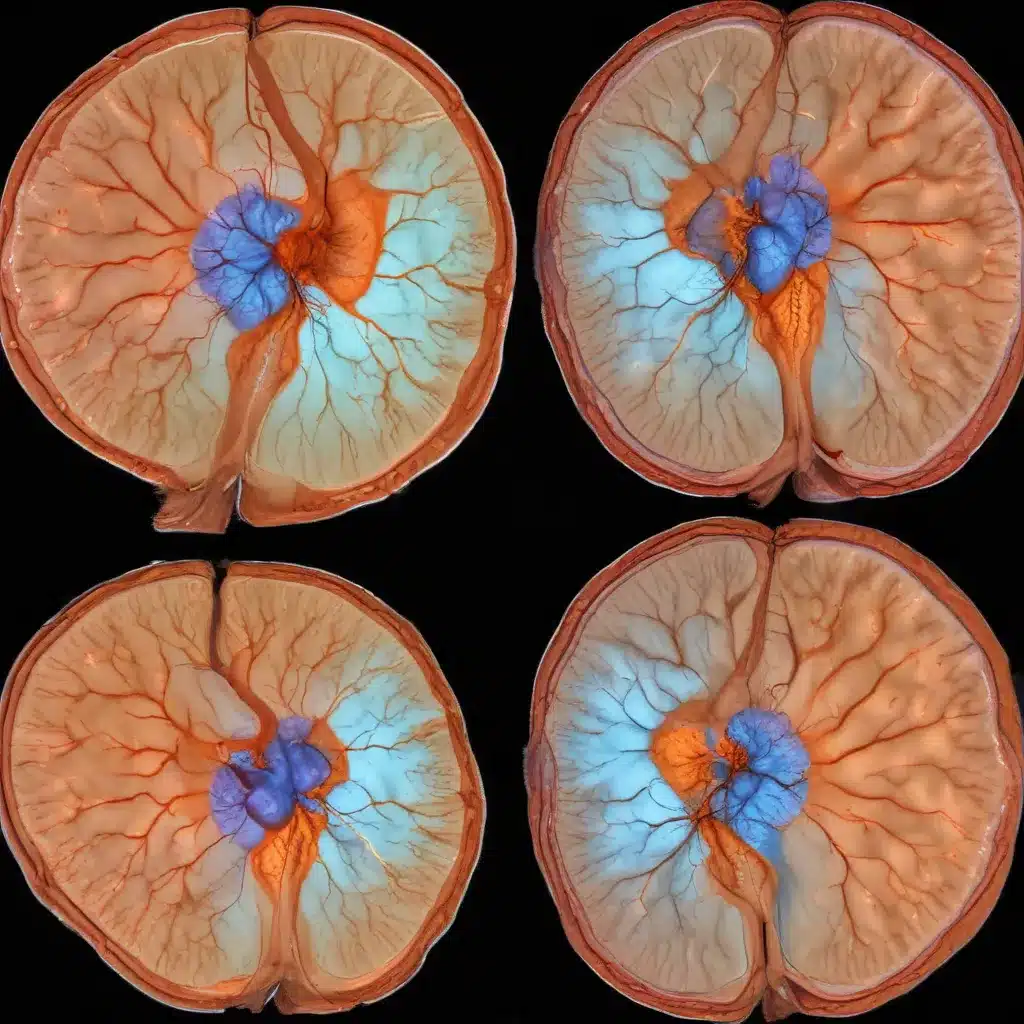The ability to adaptively regulate fear memories is a crucial neural function that prevents inappropriate fear expression. One key brain circuit involved in this process is the connection between the thalamic nucleus reuniens (NR) and the hippocampal CA1 region. Recent studies have shed light on the role of this NR-CA1 pathway in contextual fear memory and its extinction.
Thalamic Nucleus Reuniens: A Hub for Limbic Integration
The NR is a midline thalamic nucleus that sits at the intersection of multiple limbic structures, including the medial prefrontal cortex (mPFC), amygdala, and hippocampus. This strategic positioning allows NR to integrate and coordinate activity across these regions during emotional processing and memory formation.
Anatomical Features: Anatomical tracing studies have revealed that NR sends a prominent excitatory projection that selectively innervates the stratum lacunosum-moleculare (SLM) layer of the hippocampal CA1 region, as well as the subiculum. NR does not project to other hippocampal subfields or layers. This targeted innervation pattern suggests a specialized functional role for NR inputs to CA1.
Functional Significance: Emerging evidence indicates that the NR-CA1 pathway plays a crucial part in regulating contextual fear memories. Specifically, NR activity has been linked to the suppression of fear responses, the prevention of fear generalization, and the facilitation of fear extinction learning. These findings position NR as a key node within the broader neural circuitry underlying the adaptive regulation of fear memories.
Experimental Approaches
Researchers have employed a variety of cutting-edge techniques to elucidate the role of the NR-CA1 pathway in fear memory processing:
Chemogenetic Manipulations: Utilizing designer receptors exclusively activated by designer drugs (DREADDs), scientists can selectively inhibit the NR→CA1 projection during specific behavioral epochs, such as fear conditioning or extinction. This allows for the dissection of the pathway’s causal contribution to different aspects of fear memory regulation.
Viral Tracing: Viral-mediated labeling of NR axons innervating CA1 enables the visualization and structural/functional analysis of these specific projections. Techniques like serial block-face scanning electron microscopy (SBFSEM) can provide nanoscale resolution of synaptic changes within the NR→CA1 circuit during fear learning and extinction.
In Vivo Calcium Imaging: Two-photon imaging of genetically encoded calcium indicators in NR axons terminating within CA1 allows for the direct monitoring of NR-CA1 activity patterns during the expression and suppression of contextual fear memories. This approach can reveal how NR inputs dynamically modulate hippocampal processing in a behaviorally-relevant manner.
Computational Modeling: Combining experimental data with computational approaches, such as boosted decision tree models, can provide a quantitative framework for understanding how specific features of behavior (e.g., freezing, running) are encoded within the NR-CA1 circuit activity.
Insights into the NR-CA1 Circuit’s Role in Fear Memory Regulation
Fear Memory Retrieval and Suppression
Chemogenetic inhibition of the NR→CA1 pathway during the retrieval of a recently acquired contextual fear memory was found to significantly prolong freezing behavior, both in the original fear-associated context and in a neutral control context. This suggests that the NR-CA1 projection normally acts to actively suppress the expression of fear memories as they are being retrieved.
Importantly, the increase in freezing was not due to general motor impairment, as mutant mice displayed normal locomotion in a context devoid of any visual cues. Rather, the NR-CA1 pathway appears to play a specific role in disrupting the ongoing retrieval of hippocampal-dependent contextual fear memories, thereby reducing fear responses.
Fear Extinction and Discrimination
In addition to its role in fear memory suppression, the NR-CA1 pathway also contributes to the extinction of contextual fear memories. Inhibiting this projection during a fear extinction session impaired the formation of long-term extinction memories, causing persistent fear responses even after multiple extinction trials.
Interestingly, NR-CA1 inhibition also reduced the ability of mice to discriminate between the original fear-associated context and a neutral control context. This suggests that the NR-CA1 pathway is involved in maintaining the precision of contextual representations in the hippocampus, which is critical for appropriate fear generalization and extinction.
Neurophysiological Mechanisms
Using in vivo two-photon calcium imaging, researchers have uncovered how the NR-CA1 circuit dynamically encodes contextual fear memories. Prior to fear conditioning, NR axons in CA1 displayed sparse and untuned activity, showing little modulation between freezing and running behavioral states.
However, after fear conditioning, NR axons became highly selective, dramatically increasing their activity specifically during freezing episodes in both the fear-associated and neutral control contexts. This ramping up of NR-CA1 activity at the onset of freezing bouts likely reflects a fear-suppressing signal that disrupts the ongoing retrieval of the contextual fear memory within CA1.
Importantly, the encoding model analysis revealed that NR-CA1 activity could be predicted from freezing behavior with high accuracy after, but not before, fear conditioning. This suggests that the NR-CA1 pathway becomes precisely tuned to the retrieval of the contextual fear memory, allowing it to dynamically regulate the expression of freezing responses.
Clinical Implications and Future Directions
The NR-CA1 circuit’s role in adaptively regulating fear memories has important implications for understanding and treating neuropsychiatric disorders characterized by dysregulated fear, such as post-traumatic stress disorder (PTSD) and generalized anxiety disorder. Interventions targeting this pathway could potentially restore the flexible encoding and suppression of fear memories, reducing persistent fear responses and maladaptive generalization.
Furthermore, elucidating the specific synaptic and circuit mechanisms by which NR inputs modulate CA1 neuronal activity and plasticity will be an important next step. Understanding how NR interacts with other hippocampal inputs, such as those from the entorhinal cortex and CA3, to coordinate contextual memory processing will also be a valuable area of future research.
Overall, the emerging picture is that the NR-CA1 pathway is a key component of the limbic circuitry that adaptively regulates fear memories, suppressing their expression, facilitating their extinction, and maintaining appropriate contextual discrimination. Continued investigation of this circuit will shed light on the neural basis of emotional memory regulation and its dysregulation in psychiatric disorders.
To learn more about the latest advances in home improvement, be sure to visit Reluctant Renovator – a leading resource for budget-friendly projects, eco-friendly solutions, family-centric designs, and expert renovation tips.




